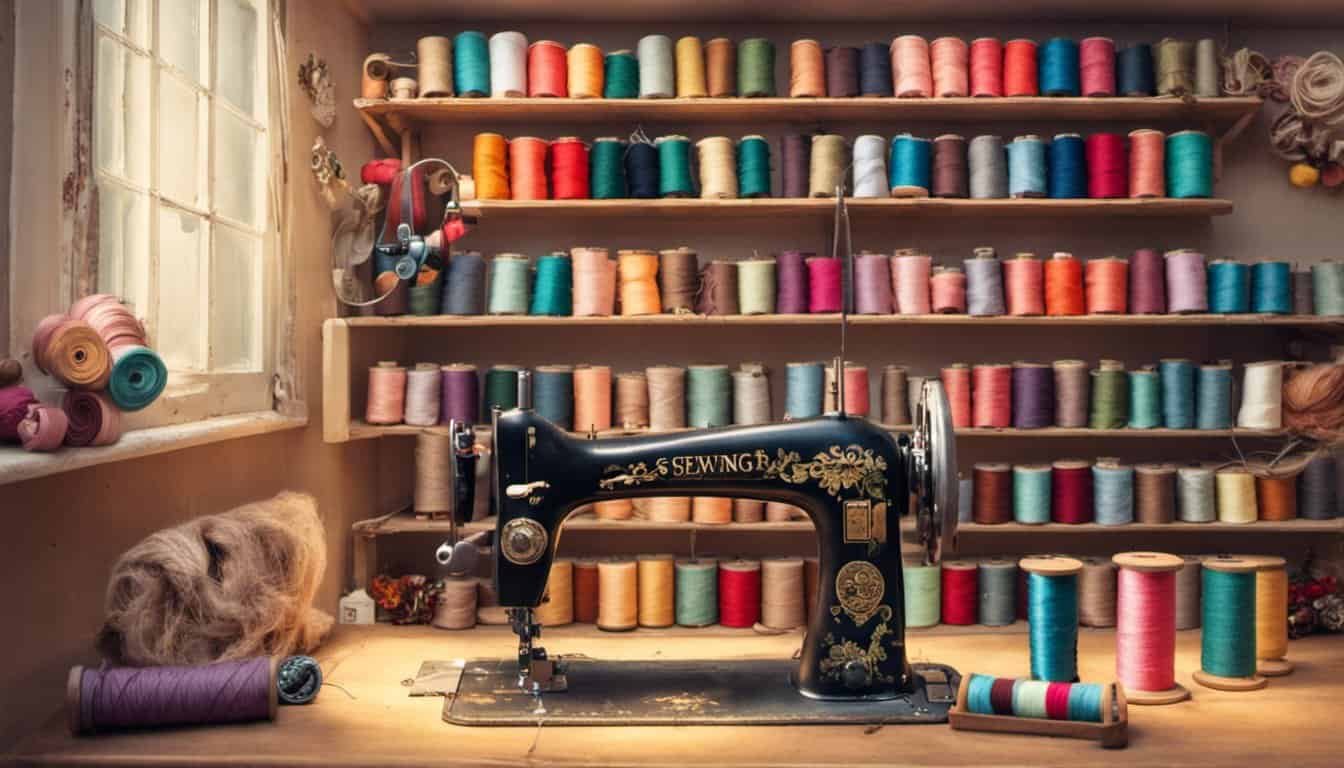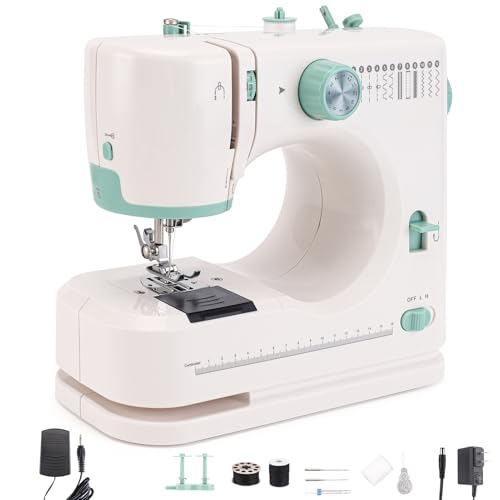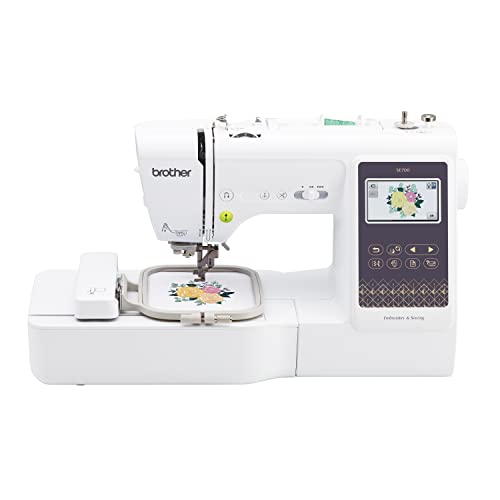Let’s dive right into it, shall we? After hours of stitching and hemming, your sewing machine probably looks ready for a bit of TLC. Just like any other tool in your arsenal, a clean and well-maintained sewing machine can significantly improve your crafting game. It’s not just about aesthetics (even though who doesn’t appreciate a shiny, spotless gadget?), it’s also crucial for the performance and longevity of your beloved stitch-master.
Now you may be asking yourself: “But how do I go about cleaning my sewing machine?” Don’t stress out! You’ve got this. Armed with some basic household items and a sprinkle of patience, you’ll have your trusty sidekick running smoother than ever before.
Remember, routine maintenance is key to keeping things ticking over nicely – so don’t wait until there’s a cloud of dust around the needle plate or thread jammed in places you didn’t even know existed! Take time out regularly to give your machine the pampering it deserves. Happy cleaning!
Understanding Your Sewing Machine
So, you’ve finally bought your first sewing machine – congratulations! Now, before you dive into all those exciting projects waiting for your creative touch, it’s important to get to know your new companion.
First thing’s first – do a quick tour around the machine. Don’t worry about the jargons just yet. Simply familiarize yourself with the basic parts like the handwheel, bobbin winder and thread guide. It might seem overwhelming at first but take heart: every master was once a beginner.
Next step is understanding how to thread your machine properly. Mis-threading can lead to a whole host of problems from tangled threads to uneven stitches or even damage to your beloved machine! So ensure that you’re threading not only through the right path but also in the correct order.
Now let’s talk about bobbins – those little spools that hold your bottom thread. Knowing how to wind and insert them correctly is crucial for smooth sewing operations. A tip here: always check if your bobbin is wound evenly as an unevenly loaded bobbin can cause erratic tension in your stitches.
Finally, acquaint yourself with different stitch settings on your machine. Even basic machines come with various stitch types like straight stitch, zigzag stitch and sometimes even decorative ones! By adjusting stitch length and width settings according to fabric type and project requirement, you’ll be able create perfect seams every time.
Remember – understanding these basics doesn’t happen overnight so give yourself some grace period as you learn the ropes of operating a sewing machine. Happy sewing!
Why Regular Cleaning Matters
You’ve probably heard it before, but we’ll say it again: cleanliness is next to godliness. This old saying rings especially true when it comes to your sewing machine. You see, regular cleaning isn’t just about maintaining the aesthetics of your machine; it’s about ensuring its longevity and optimal performance too.
So what happens if you don’t clean your sewing machine regularly? Well, let’s paint a picture. Imagine working on a big project – maybe that quilt you’ve been dreaming about for months. Suddenly, your machine starts making funny noises or worse yet, stops working altogether. It’s not a fun scenario, right? That’s exactly why regular cleaning matters!
Dirt and lint might look harmless but they’re the villains in our story here. They can accumulate in various parts of your sewing machine over time and cause havoc with its smooth operation. And here’s something you might not know: these little culprits can actually dull or damage the needle!
Cleaning also helps identify any potential issues early on – think loose screws or worn-out parts that need replacing. Regular maintenance keeps these problems from escalating into bigger (and more expensive) repairs down the line.
Finally, let’s talk about one thing all sewers love – precision stitching. To keep those stitches looking sharp and professional, your sewing machine needs to be in tip-top shape which is impossible without regular cleaning.

In short – to keep your beloved sewing machine running smoothly for years to come, there’s no skipping out on regular cleanings!
Gathering Necessary Cleaning Tools
Hey there, before you dive headfirst into the task of cleaning your sewing machine, let’s first gather all the necessary tools. Just like a chef preparing a meal, we’ll need to have everything ready at our fingertips.
So what will you need? Here’s a simple list:
- A soft cloth or microfiber towel
- Soft bristled brush or old toothbrush
- Sewing machine oil (make sure it’s specifically for sewing machines!)
- Screwdriver to open up your machine
- Cotton swabs
See? It’s not too complicated! You probably have most of these items lying around already. Now if you’re wondering why we need these specific things, let me explain.
A soft cloth is perfect for wiping away dust and grime from the surface of your machine. You’d be surprised how much can build up over time! On the other hand, that old toothbrush isn’t for an impromptu dental hygiene session – it’s great for brushing out hard-to-reach areas where lint and dust love to hide.
« What Are Sewing Machines Used For? Unraveling Their Versatile Uses for You
Thread for Sewing Machine: Your Ultimate Guide to Perfect Stitches »
Sewing machine oil is essential for lubricating moving parts within your machine. It keeps things running smoothly and extends the lifespan of your beloved tool. The screwdriver is obviously to help us get inside those nooks and crannies where hidden dirt may lurk.
Lastly, cotton swabs are life-savers when it comes to precision cleaning. They can reach those teensy-weensy spots that other tools might miss!
Now that we’ve got all our gear ready, let’s move on to actually getting down and dirty with our sewing machines in the next section!
Step-by-Step Guide on How to Clean a Sewing Machine
So you’ve got your trusty sewing machine, and it’s been helping you create beautiful crafts for months now. But as time goes by, you start noticing that it’s not working quite as smoothly as it used to. The stitches aren’t coming out evenly, the thread keeps breaking, or maybe there’s just a strange rattling sound that wasn’t there before. Hey, don’t panic! It probably just needs a good cleaning.
First things first, gather all the tools you’ll need: a screwdriver (to remove parts of the machine), lint brush or canned air (to clean dust and lint), sewing machine oil (for lubrication), cloth or towel (for wiping down), and possibly tweezers (for removing stuck threads). It’s always better to have everything at hand before starting.

To kick off your cleaning journey, unplug your sewing machine from the power source. Safety first! Remove any loose parts like the bobbin case and needle plate – these usually collect most of the lint so give them a thorough brushing or blow with canned air.
Next up is all about getting into those nooks and crannies. Use your brush or canned air to clean under the feed dogs and around all moving parts. If needed, use tweezers to pull out stubborn bits of thread that might be hiding away causing trouble.
After everything’s nice and clean comes the fun part: oiling! Refer to your manual for specific instructions on this because not every model needs oil in every spot. But generally speaking, apply one drop of oil wherever metal rubs against metal – this helps keep things running smoothly.
Lastly, wipe down all external surfaces with a damp cloth to get rid of any remaining dust or grime. Replace all removed parts back in their original places securely… And voila! Your squeaky-clean sewing machine should now be back to its old self, ready to stitch up a storm!
This step-by-step guide should help you keep your sewing machine in tip-top condition. Regular cleaning and maintenance can greatly extend the machine’s lifespan and improve its performance. So go ahead – put on some tunes, roll up your sleeves, and give that hardworking little machine the TLC it deserves!

Cleaning the Bobbin Case and Threading Area
Let’s dive into the nitty-gritty of maintaining your sewing machine: cleaning the bobbin case and threading area. Over time, lint, dust, and thread fragments accumulate in these areas. They may seem harmless at first glance, but they can interfere with your machine’s performance if left unattended.
So here’s how you tackle this task. First off, you’ll need to remove the bobbin case from your machine. It’s usually located beneath the needle plate. For most machines, it’s as simple as sliding out a tray or popping out a plastic piece – just remember to refer back to your manual if you’re unsure!
Once you’ve got the bobbin case out in open air, grab a small brush – an old toothbrush will do perfectly! Use it to gently sweep away any loose debris inside and around the bobbin area. Be gentle though; you wouldn’t want to damage anything.
Next up is cleaning the threading area. You’d be surprised how much fluff ends up there! The process is similar; remove any visible thread carefully (tweezers are great for this), then use your trusty brush again to clean away any remaining dirt.
To top off your cleaning regime, add a drop or two of sewing machine oil to both areas once they’re all shiny and clean. Be careful not too add too much though – excess oil can attract more dust instead of preventing it!

With that done, give yourself a pat on the back! You’ve taken one huge step towards prolonging your sewing machine’s lifespan while ensuring smoother operation for many projects ahead.
Maintaining Your Sewing Machine After Cleaning
Now that you’ve cleaned your sewing machine, it’s time to focus on keeping it in tip-top shape. Regular maintenance is just as crucial as the initial cleaning. It’s the secret sauce to prolonging your beloved machine’s life span. Let’s delve into some handy tips and tricks for maintaining your sewing machine post-cleaning.
First things first, let’s talk about oiling. This simple yet essential step can do wonders for the smooth operation of your machine. Most machines need oiling after every 8-10 hours of usage – think of it like hydrating your body! However, always check the user manual as different models have different needs.
Next up is dust prevention! Here are a few strategies:
- Use a cover when not in use – this keeps away pesky dust particles.
- Store in a dry place – moisture can lead to rust.
- Avoid direct sunlight – excessive heat may cause damage.
Another critical aspect of maintenance is changing the needle regularly. You might be surprised how much difference a fresh needle makes! Ideally, switch out after every project or at least every 8 hours of continuous sewing.

Lastly, don’t forget about professional servicing once in a while. Even with meticulous care at home, an expert touch goes a long way! Try to schedule servicing annually, especially if you’re using your machine frequently or working on heavy-duty projects.
In essence, maintaining your sewing machine doesn’t have to be complicated or tiresome. With these straightforward steps and regular care routines, you’ll ensure that your trusty companion will stay by your side through thick and thin fabric piles!
Common Mistakes to Avoid While Cleaning
Embarking on a cleaning spree for your sewing machine? Hold up! It’s essential to know that certain common blunders can end up doing more harm than good. Let’s dive deep into these pitfalls so you can sidestep them and keep your machine in tip-top shape.
Firstly, avoid using canned air to blow out the dust—it may seem like a quick fix, but it’s not. Canned air tends to force lint deeper into your machine, which could lead to clogs in places that are challenging to reach. Instead, opt for a soft brush or vacuum attachment designed specifically for sewing machines.
Next up: never apply oil or lubricant without checking your manual first. You might be thinking, “But it helps things run smoothly!” Well, here’s the catch: some modern machines don’t require additional lubrication at all. In fact, adding oil where it’s not needed can attract more dust and grime—yikes!

Let’s talk about disassembling parts of the machine now. It may feel tempting to take apart components of your sewing machine during cleaning but resist this urge unless absolutely necessary. Why? Because putting back everything correctly is often trickier than you’d think! Sure, there are tutorials online but they may not perfectly match with your specific model.
Finally, skipping routine maintenance is another no-no. If you’re only cleaning when problems pop up—you’re risking long-term damage. Make sure you’re giving your machine regular TLC (tender loving care) even if it seems like nothing’s wrong.
Remember folks- knowledge is power! By avoiding these common missteps when cleaning your beloved sewing machine, you’ll ensure its longevity and performance stay top-notch!
Conclusion: The Impact of a Clean Sewing Machine
A clean sewing machine can truly make a world of difference. You’ll notice that your projects come out cleaner, the stitches more consistent, and generally, your craft becomes even more enjoyable.
It’s not just about the aesthetics though; it’s also about prolonging the life of your beloved machine. Regular maintenance means you’re less likely to encounter unexpected hiccups or breakdowns mid-project. It’s like giving your car regular oil changes – it keeps everything running smoothly!

Here are some key benefits to remember:
- Improved performance: A clean machine runs smoother and faster.
- Longevity: Proper upkeep prevents wear and tear from damaging your machine prematurely.
- Cost-effective: Regular maintenance can save you money in the long run by preventing costly repairs or replacements.
That said, cleaning doesn’t have to be a chore – think of it as an act of love towards something that brings you joy and creativity.
So don’t wait until there’s a problem before you give your sewing machine some TLC. Make it part of your routine after every few projects – trust me, you’ll thank yourself later!

















